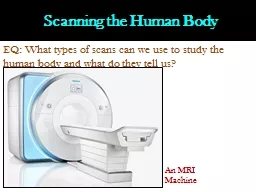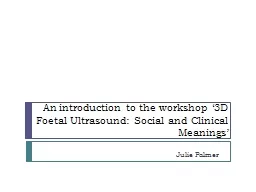PPT-Scanning the Human Body EQ: What types of scans can we use to study the human body and
Author : pasty-toler | Published Date : 2020-04-02
An MRI Machine I Computerized Axial Tomography CATCT CT scanning adds many Xray images with the aid of a computer to generate crosssectional views of a patients
Presentation Embed Code
Download Presentation
Download Presentation The PPT/PDF document " Scanning the Human Body EQ: What types ..." is the property of its rightful owner. Permission is granted to download and print the materials on this website for personal, non-commercial use only, and to display it on your personal computer provided you do not modify the materials and that you retain all copyright notices contained in the materials. By downloading content from our website, you accept the terms of this agreement.
Scanning the Human Body EQ: What types of scans can we use to study the human body and: Transcript
Download Rules Of Document
" Scanning the Human Body EQ: What types of scans can we use to study the human body and"The content belongs to its owner. You may download and print it for personal use, without modification, and keep all copyright notices. By downloading, you agree to these terms.
Related Documents














